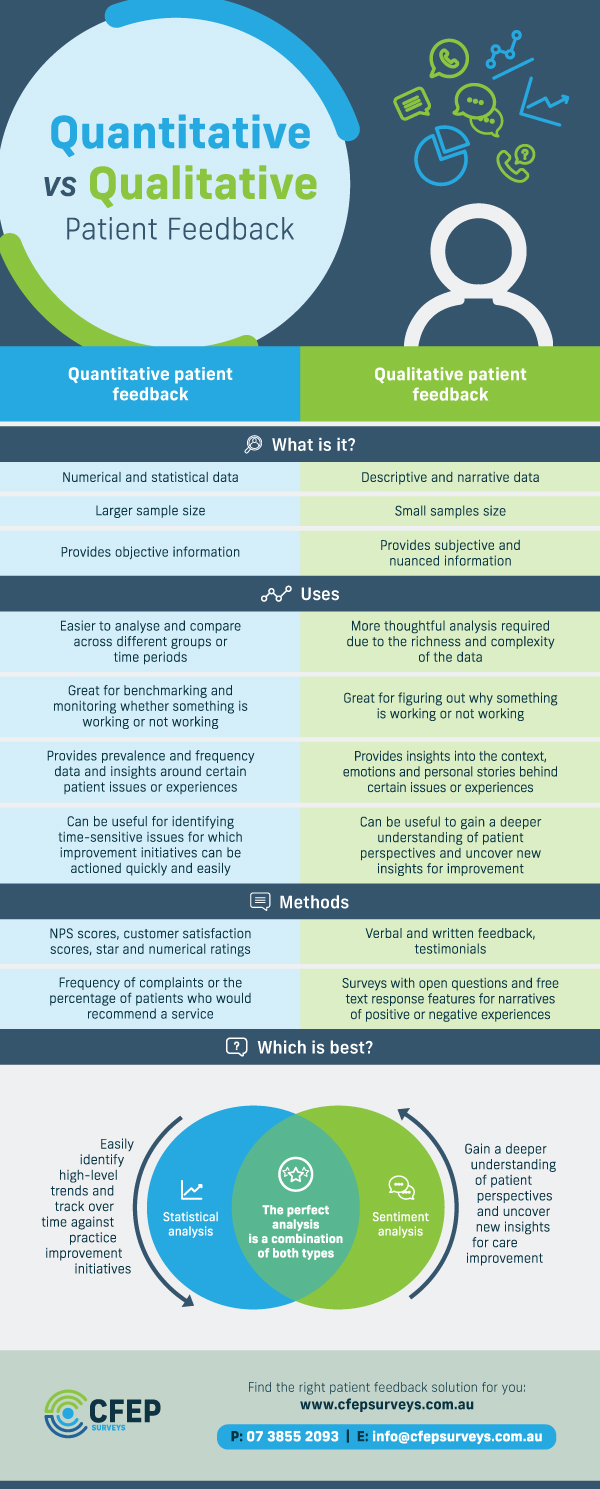
Sydney Street Medical: using patient feedback to support quality improvement
Sydney Street Medical is a well-established general practice in Mackay, Queensland, providing a broad range of health services including general

As healthcare professionals, we strive to deliver the best possible care to our patients. We are constantly seeking ways to improve our quality of service and care and the policies and procedures that enable us to function in such a sensitive and regulated environment.
A critical aspect of this effort to improve is gathering patient feedback, which can be used to identify areas of strength and weakness in services. There are different types of patient feedback, including Net Promoter Score (NPS) or rating-style feedback and qualitative patient feedback. While NPS and rating style feedback can provide valuable insight into patient satisfaction, qualitative patient feedback can provide a deeper understanding of patient experiences and perspectives and ultimately lead to more effective Quality Improvement (QI) efforts.
Qualitative patient feedback involves patients sharing their experiences and perspectives in their own words. This can be done through surveys, focus groups, or other forms of communication. Qualitative feedback allows patients to provide more detail and context to their experiences, and healthcare providers can gain insight into specific areas where they can improve.

Qualitative patient feedback provides a detailed and nuanced understanding of patients’ experiences. Unlike NPS or rating-style feedback, which provides a numeric score, qualitative feedback captures patients’ opinions, feelings and perceptions. This type of feedback can provide insights into specific areas of improvement, uncover issues that may be missed by quantitative methods and reveal underlying reasons for patients’ experiences.
For example, a patient may rate their experience as a 7 out of 10 but not provide any additional details. Without further information, it is difficult to determine what led to that rating or how to improve. However, if the patient is asked to provide qualitative feedback, they may explain that they had difficulty understanding their treatment plan or felt rushed during their appointment. The information can then be used to improve patient communication or adjust scheduling practices to allow for more time with each patient.
In addition to providing more detailed information, qualitative patient feedback allows for more meaningful patient engagement. When patients feel that their voices are being heard and their opinions are valued, they are more likely to be satisfied with their care and engage in their own health management.
Collecting qualitative patient experience data is only the first step. Healthcare providers must also know how to effectively utilise this feedback for QI. Here are some tips on how to do this:
Organise feedback into themes: To make sense of the large volume of feedback, it can be helpful to organise it into themes. This allows you to identify areas of strength and weakness and to prioritise improvement initiatives. Patient feedback tools such as those from CFEP Surveys can be used to understand your patient experience data and help collate the data into meaningful themes.
Involve staff in the feedback process: Staff who work directly with patients are often in the best position to interpret patient feedback and identify areas for improvement. By involving staff in the feedback process, you can ensure that improvement initiatives are relevant and practical.
Act on feedback: The next step is to analyse and act upon the data. You could develop action plans aligned to the issues uncovered in the feedback you receive and track progress over time. A clear demonstration to patients that their feedback is taken seriously can also lead to improved patient engagement.
It is important to note that utilising qualitative patient feedback does not mean ignoring NPS or rating-style feedback altogether. These methods provide valuable information. However, when used in conjunction with qualitative feedback, we can gain a deeper understanding of patient experiences and perspectives and use that information to drive meaningful improvements in the quality of care provided.
To learn more about the qualitative and quantitative feedback elements in Patient Reported Measures (PREMs) and Patient Reported Outcomes (PROMS), please watch this short video. Or discover how Active Insights the easy-to-use digital feedback tool by CFEP Surveys – supports healthcare providers to collect, collate and analyse patient feedback effectively and in real-time.

Sydney Street Medical is a well-established general practice in Mackay, Queensland, providing a broad range of health services including general

Australia’s healthcare system faces significant challenges from the growing burden of chronic conditions. According to the Australian Institute of Health